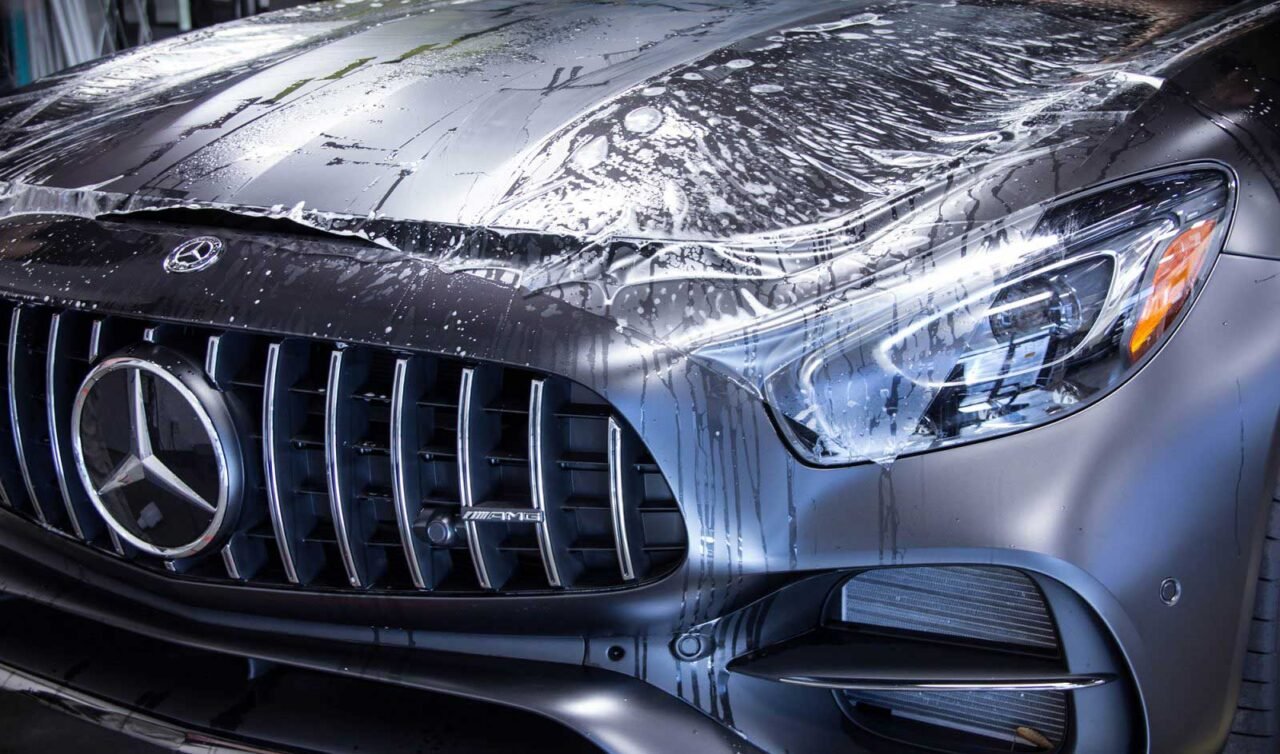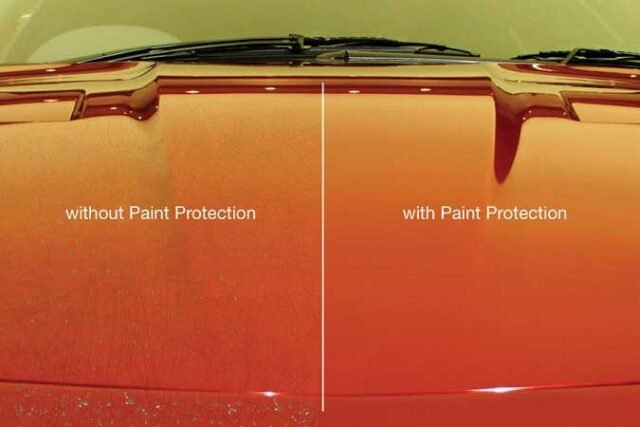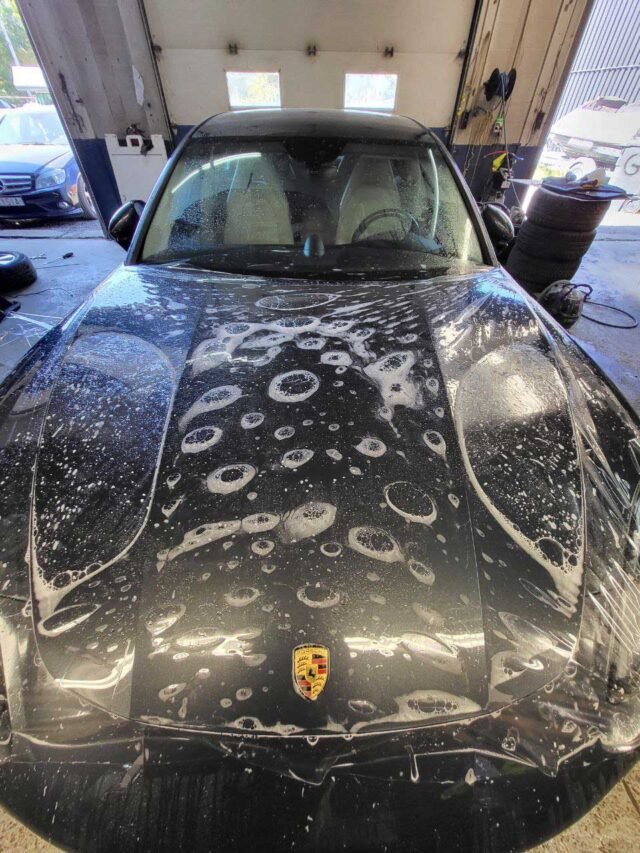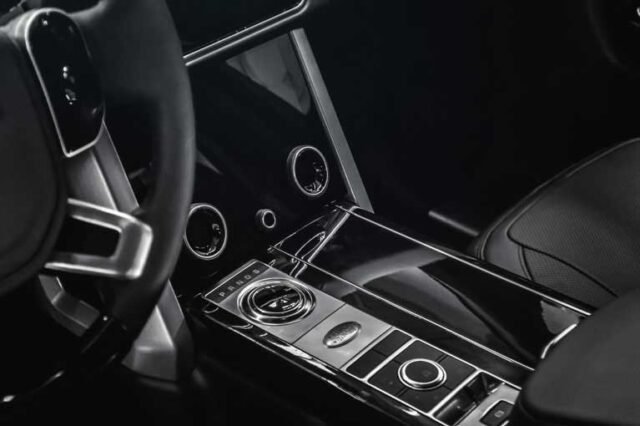• what’s PPF
Paint Protection Film, commonly known as PPF, is a transparent, urethane-based automotive film that is applied to the exterior surfaces of vehicles to protect the paint from various forms of damage. It serves as a protective barrier against factors such as rock chips, scratches, road debris, UV rays, and environmental contaminants, helping to preserve the appearance and value of a vehicle.
• How long does PPF typically last on a vehicle?
The longevity of Paint Protection Film depends on various factors, including the quality of the film, installation quality, and environmental conditions. Generally, high-quality ppf can last from 5 to 10 years or more. Regular maintenance and proper care can extend its lifespan.
• Can Paint Protection Film be applied to any type of vehicle?
can be apply PPF to a wide range of vehicles, including cars, trucks, SUVs, motorcycles, and even recreational vehicles (RVs). It is suitable for both new and used vehicles.
• What is the installation process for PPF?
installation is a precise and meticulous process typically carried out by professionals. It involves the following steps:
– Surface preparation, including cleaning and sometimes paint correction.
– Custom cutting of the sheets to fit the vehicle’s specific panels.
– Application of the film using specialized tools to ensure a seamless, bubble-free installation.
– Final trimming and quality checks.
• Does Paint Protection Film protect against rock chips and scratches?
Yes, one of the primary purposes of this protection is to protect against rock chips, scratches, and other minor abrasions. It absorbs the impact energy from these objects, preventing them from reaching and damaging the vehicle’s paint.
Read more
• PPF Removal Tricks
• Does PPF affect the appearance of the vehicle’s paint?
It is designed to be nearly invisible when properly installed. It maintains the original appearance of the vehicle’s paint, allowing its color and finish to shine through.
• Does require special maintenance?
It requires minimal maintenance. Regular washing with mild soap and water is usually sufficient to keep it clean. Some PPF products have self-cleaning properties that make maintenance even more straightforward.
• Does it provide protection against environmental contaminants?
Yes, it offers protection against various environmental contaminants such as tree sap, bird droppings, road tar, and insect splatter. These substances are less likely to bond to the PPF’s smooth surface.
• Does paint protection film affect the resale value of a vehicle?
Having PPF installed on a vehicle can positively impact its resale value. It indicates to potential buyers that the vehicle has been well-maintained and protected, which can result in a higher resale price.
• Can be customized for different finishes (matte, glossy, etc.)?
Yes, it is available in various finishes, including matte and glossy. This allows vehicle owners to choose the finish that best matches their vehicle’s aesthetics.
• How does PPF compare to ceramic coatings for paint protection?
Paint protection film and ceramic coatings serve different purposes. It offers physical protection against impact and abrasion, while ceramic coatings provide chemical resistance and hydrophobic properties. Some car owners choose to use both for comprehensive protection.
• Is paint protection film vulnerable to damage from bird droppings or tree sap?
While it provides protection against bird droppings and tree sap, it’s still advisable to clean these substances off as soon as possible to prevent any potential staining or damage to the film.
• Can be applied to headlights and taillights?
Yes, it can be applied to headlights and taillights to protect them from pitting, yellowing, and UV damage. This can help maintain the clarity and appearance of these lighting components.
• What is the warranty typically offered with PPF products?
Warranties for paint protection film products can vary depending on the manufacturer and the specific product line. Generally, you can expect warranties ranging from 5 to 10 years or more. These warranties typically cover issues such as yellowing, cracking, peeling, and discoloration. It’s essential to read and understand the warranty terms provided by the manufacturer.
• Can be applied over existing paint damage?
It can be applied over existing paint damage to protect the affected areas from further deterioration. However, it’s crucial to note that the film will not repair or conceal existing damage; it will only prevent additional harm.
• Can paint protection film be repaired if it gets damaged?
Minor damage, such as small tears or scratches, can sometimes be repaired by a professional installer. They can use specialized techniques to patch or reapply sections of the film, restoring its protective properties.
• What is the difference between standard and premium PPF products?
The difference between standard and premium PPF products often lies in factors like the quality of the materials, thickness, clarity, and additional features. Premium material may offer enhanced self-healing properties, greater optical clarity, and longer warranties. However, standard protector film can still provide effective protection for your vehicle.
• How long does the installation of Paint Protection Film typically take?
The duration of installation varies depending on several factors, including the size of the vehicle, the areas to be covered, and the experience of the installer. On average, a professional PPF installation for common areas like the front bumper, hood, fenders, and mirrors can take anywhere from 1 to 2 days . However, for full-body coverage or more complex vehicle shapes, the installation may extend to a 3 or more. It’s essential to discuss the expected timeline with your chosen installer to ensure a clear understanding of the installation process for your specific vehicle and requirements.
• Does it work well in extreme weather conditions?
It is designed to withstand a wide range of weather conditions, from extreme heat to freezing cold. It offers protection against UV radiation, preventing paint damage and discoloration caused by the sun. Moreover, provides a barrier against ice, snow, and road salts, which can harm your vehicle’s finish during winter months.
• Can PPF be applied to older vehicles with existing paint imperfections?
Yes, it can be applied to older vehicles with existing paint imperfections. It can help conceal minor blemishes and protect the vehicle from further damage. However, for the best results, any major paint correction should be performed before installation.
• Is PPF noticeable on the vehicle’s surface?
When professionally installed, it is nearly invisible, and it doesn’t noticeably alter the vehicle’s appearance. It maintains the clarity and shine of your car’s paint, making it an unobtrusive form of protection.
• Can Paint Protection Film be applied to custom-painted or wrapped vehicles?
Paint Protection Film can be applied to custom-painted or wrapped vehicles, and it can help preserve the integrity of these custom finishes. It’s essential to work with a Paint Protection Film installer who understands the specific needs of custom paint and wraps to ensure proper coverage and fit.
• Does Paint Protection Film offer any protection against door dings and minor impacts in parking lots?
It provides some protection against minor door dings and impacts, thanks to its ability to absorb energy and prevent scratches. While it’s not a substitute for dedicated dent protection, it can offer a level of security in parking lot scenarios.
• Can PPF be applied to the roof and glass surfaces of a vehicle?
It can be applied to the roof and glass surfaces of a vehicle. While it is less common on these areas, some vehicle owners choose to protect glass surfaces to reduce the risk of chips and cracks.
• Is PPF resistant to water spots and hard water stains?
It can help protect the underlying paint from water spots and hard water stains, but it may still require regular cleaning and maintenance of PPF to prevent mineral buildup on the film’s surface.
• Does PPF hinder the paint from curing or off-gassing after a new vehicle’s purchase?
Paint Protection Film does not significantly hinder the paint from curing or off-gassing on a new vehicle. Manufacturers typically recommend waiting a few weeks before applying PPF to allow the paint to fully cure. PPF’s micro-porous nature allows the paint to breathe while providing protection.
• How does PPF impact a vehicle’s resale value compared to non-PPF vehicles?
Vehicles with This protection tend to have higher resale values compared to those without it. The presence of Paint Protection Film indicates that the vehicle has been well-maintained and protected, making it more attractive to potential buyers.
• Can PPF protect against paint damage from off-road driving or rough terrain?
It provides a level of protection against paint damage from off-road driving and rough terrain, such as gravel roads and trails. It can help prevent rock chips and scratches, but extreme conditions may still lead to wear and tear over time.
• How does PPF interact with other aftermarket modifications, such as body kits or spoilers?
can be customized to fit around aftermarket modifications like body kits or spoilers. Professional installers can ensure that these components are properly protected, and the film seamlessly conforms to the vehicle’s unique features.
• Does PPF require reapplication or touch-up after a certain period?
does not require reapplication or touch-up as long as it’s properly maintained. However, if the film experiences significant damage or wear, sections of it can be replaced or repaired without the need for a full reapplication.
• Does PPF have any impact on the vehicle’s weight and aerodynamics?
PPF has a minimal impact on a vehicle’s weight and aerodynamics due to its lightweight nature. The difference is negligible and does not affect the vehicle’s performance or fuel efficiency.
• Can PPF be removed without leaving adhesive residue?
When Paint Protection Film is removed by a professional using the appropriate techniques, it should not leave adhesive residue on the paint. The film’s adhesive is designed to be residue-free, making the removal process clean and safe.
• Can Paint Protection Film be applied to protect the interior surfaces of a vehicle, such as the dashboard or door panels?
It is primarily designed for exterior use to protect the paint. However, there are interior films available for protecting interior surfaces. These films can safeguard areas like the dashboard, door panels, and center console from scratches and wear.
• How does Paint Protection Film handle exposure to road salt and brine solutions during winter months?
This protection provides excellent protection against road salt and brine solutions. These corrosive substances can harm a vehicle’s finish, and PPF acts as a barrier, preventing them from directly contacting the paint.
• Can PPF be applied to protect classic or vintage vehicles?
can be applied to classic and vintage vehicles to safeguard their pristine finishes. It’s important to work with an experienced installer who understands the unique needs of older vehicles and the preservation of their original paint.
• Is PPF resistant to staining from common automotive fluids like motor oil or brake fluid?
It offers some resistance to staining from common automotive fluids, such as motor oil or brake fluid. However, prompt cleaning and maintenance are still recommended to prevent any long-term staining.
• Can PPF be used on motorcycles to protect their paint and finish?
It is an excellent choice for protecting motorcycle paint and finish. Motorcycles are often exposed to harsh environmental conditions, and it can help maintain their appearance and value.
• Can PPF be applied to bicycles for protection against scratches and scuffs?
Yes, It can be applied to bicycles to protect them from scratches, scuffs, and other forms of damage. This can help preserve the look and condition of the bike, particularly for high-end models.
• Is there a difference between PPF designed for automotive use and PPF for other applications?
Paint Protection Film, designed for automotive use is specially formulated to meet the unique requirements of vehicles, including flexibility, optical clarity, and UV resistance. While similar, PPF for other applications may not offer the same level of protection or performance.
• Can PPF be custom-cut to protect specific areas prone to damage on a vehicle?
can be custom-cut to protect specific areas prone to damage on a vehicle, such as the front bumper, side mirrors, or lower door panels. This tailored approach ensures that critical areas are shielded from potential harm.
• How does PPF handle exposure to bird droppings, which can be acidic and corrosive?
It provides protection against bird droppings, which can be acidic and corrosive to a vehicle’s paint. The film acts as a barrier, preventing direct contact between the bird droppings and the paint. This helps mitigate the risk of staining and damage.
• Can PPF be applied to vehicles with matte or satin paint finishes?
This protection is available in various finishes, including matte and satin, to protect vehicles with these unique paint finishes. It can help preserve the distinctive look of matte or satin paint while adding a layer of protection.
• Does PPF have any impact on the ability to perform paint correction or detailing work on a vehicle?
PPF does not significantly impact the ability to perform paint correction or detailing work on a vehicle. Detailing professionals can work around the film, and some high-quality Paint Protection Film products even enhance the paint’s depth and gloss.
• Can PPF be used to protect a vehicle’s headlights, reducing the risk of pitting and cloudiness?
It can be applied to protect a vehicle’s headlights from pitting, cloudiness, and UV damage. This can extend the life of the headlights and maintain their clarity and effectiveness.
• Does PPF require any special care or attention during extreme cold weather conditions?
During extreme cold weather conditions, PPF does not require special care beyond regular maintenance. However, it’s advisable to avoid any aggressive mechanical cleaning methods, such as scraping ice off the film, to prevent potential damage.
• Can PPF be applied to wheels or rims to protect against curb rash and road debris?
Yes, it can be applied to wheels or rims to protect them from curb rash and road debris. This can help maintain the appearance of alloy wheels and prevent costly damage.
• Does PPF affect the vehicle’s factory warranty or paint warranty?
PPF should not affect the vehicle’s factory warranty or paint warranty. However, it’s essential to consult with your vehicle manufacturer to ensure that PPF installation does not void any warranty terms.
• Can PPF be installed on a vehicle with paint protection already applied, such as a ceramic coating?
It can be installed on a vehicle with paint protection already applied, such as a ceramic coating. In fact, many vehicle owners opt for both PPF and ceramic coatings to achieve comprehensive protection and enhanced aesthetics.
• How is PPF affected by frequent exposure to harsh chemicals, such as those used in commercial car washes?
It is resistant to many of the harsh chemicals used in commercial car washes. However, frequent exposure to these chemicals can reduce the longevity and effectiveness of the film. It’s recommended to use touchless or gentle hand wash methods for optimal PPF maintenance.
• How does PPF handle exposure to bug splatter and road tar during long road trips?
It offers protection against bug splatter and road tar encountered during long road trips. These substances are less likely to adhere to the smooth surface of the film, making it easier to clean and maintain the vehicle’s appearance.
• Does PPF have any impact on the paint’s depth and gloss compared to non-protected vehicles?
It can enhance the paint’s depth and gloss compared to non-protected vehicles. High-quality PPF products can have self-healing properties that help maintain a flawless finish, adding to the overall aesthetic appeal of the vehicle.
• Can PPF be used to protect vehicles with unique finishes like chrome or brushed metal?
It can be used to protect vehicles with unique finishes like chrome or brushed metal. It provides an additional layer of protection while preserving the distinctiveness of these finishes.
• How is PPF applied to curved or complex surfaces, such as bumpers with intricate designs?
Professional installers use specialized techniques to apply PPF to curved or complex surfaces, such as bumpers with intricate designs. They may use heat and stretching methods to ensure a seamless fit and full coverage.
• Can PPF be applied to the interior of the vehicle to protect against wear and tear on surfaces like the door sills and center console?
Paint Protection Film designed for interior use can be applied to protect areas like the door sills and center console from wear and tear. It helps maintain the interior’s aesthetics and prevents scratches.
• Is PPF effective in preventing rust on areas where the paint has chipped or scratched?
It can prevent further damage to areas where the paint has chipped or scratched, reducing the risk of rust. However, it does not repair existing rust or corrosion.
• Does PPF require any specific care or protection in hot, sunny climates?
In hot, sunny climates, PPF benefits from regular cleaning and maintenance to ensure optimal performance. It helps protect the film from the harsh effects of UV rays and high temperatures.
• Can PPF be applied to classic cars with original paint to preserve their historical value?
It can be applied to classic cars with original paint to preserve their historical value. It allows owners to protect these valuable vehicles while maintaining their authenticity.
• Does PPF provide protection against tree branches and other natural elements encountered on forest roads or trails?
it provides protection against tree branches and other natural elements encountered on forest roads or trails. It acts as a shield against minor impacts and abrasions, preserving the vehicle’s finish.
• Can PPF be used to protect commercial vehicles, such as delivery vans and trucks?
It can be used to protect commercial vehicles, such as delivery vans and trucks. It safeguards the vehicles’ paint from the rigors of daily use, reducing maintenance and improving their appearance.
• How does PPF handle exposure to gravel roads and construction zones?
PPF effectively protects vehicles from damage caused by gravel roads and construction zones. It shields the paint from rock chips and debris, maintaining the vehicle’s appearance.
• Can PPF be applied to high-performance sports cars and supercars with unique body shapes?
It can be custom-fitted to high-performance sports cars and supercars with unique body shapes. Skilled installers can ensure a precise fit, preserving the aesthetics and aerodynamics of these vehicles.
• Does PPF require any special care when applied to vehicles with matte or satin paint finishes?
It applied to vehicles with matte or satin paint finishes requires specific care. It’s essential to use products and techniques suitable for these finishes to prevent glossing or damaging the matte appearance.
• Can PPF be used to protect luxury vehicles with custom or rare paint colors?
It is an ideal choice for protecting luxury vehicles with custom or rare paint colors. It offers preservation and protection while keeping the unique paint finish intact.
• How does PPF handle exposure to saltwater, such as when driving near the ocean?
This protection provides protection against saltwater exposure when driving near the ocean. It acts as a barrier against the corrosive effects of saltwater, helping to maintain the vehicle’s appearance.
• Can PPF be applied to electric vehicles (EVs) without any impact on their performance or range?
It can be applied to electric vehicles (EVs) without any significant impact on their performance or range. PPF is lightweight and doesn’t add a noticeable amount of weight to the vehicle. It doesn’t hinder the aerodynamics or efficiency of EVs. In fact, it contributes to maintaining the vehicle’s appearance, which is particularly important for EV owners who value the sleek design and finish of their electric vehicles.
In conclusion, Paint Protection Film is a valuable investment for vehicle owners looking to protect their car’s paint from various forms of damage. It offers numerous benefits, including protection against rock chips and scratches, preservation of the vehicle’s appearance, and enhanced resale value. However, it’s essential to choose the right PPF product, have it professionally installed, and follow proper maintenance practices to maximize its effectiveness and lifespan. Understanding both the advantages and limitations of it will help car owners make informed decisions about its use.








